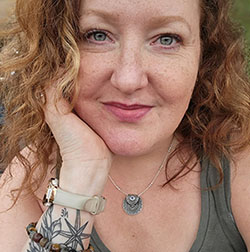Color is one of the most deceptively tricky parts of home design. Pick the right shade, and your space feels cohesive, inviting, and just right. Pick the wrong one, and suddenly your walls look like they belong in an entirely different house—and not in a good way.
Even if you’re working with a designer, understanding how to talk about color is just as important as knowing how to talk about scale, proportion, and flow. Because trust me, if your main direction is “I just want it to feel cozy”—your designer is going to need a lot more to work with.
So, let’s break down the key principles of color in home design—from the psychology behind different shades to the logistics of building a cohesive scheme that actually works.
Step 1: Color Psychology (a.k.a. Why Your Breige* Living Room Feels Safe but Also Kind of Boring)
Color isn’t just about aesthetics—it literally affects mood and perception. That’s why some rooms feel calm and soothing, while others feel bold and energetic. Here’s what you need to know about the psychological effects of color in your home:
Warm vs. Cool Colors
- Warm tones (reds, oranges, yellows) → Cozy, inviting, energetic (but can feel overwhelming if overused).
- Cool tones (blues, greens, purples) → Calming, refreshing, sophisticated (but can feel cold if not balanced with warm elements).
Neutral Colors & Why They Aren’t Always “Safe”
- Whites & Creams → Fresh, clean, airy (but can feel sterile without texture & contrast).
- Grays & Beiges → Timeless, versatile (but can feel flat if everything is the same tone).
- Blacks & Dark Hues → Bold, dramatic, grounding (but require the right lighting and balance to avoid feeling cave-like).
💡 What This Means for You: Before picking a color, ask yourself: How do I want this space to feel? If you want cozy and inviting, a cold gray might not be the best choice. If you want calm and serene, an intense red is probably not the move.
* “Briege” is probably my favourite design term and least favourite design trend to come out of the 2010s. You know exactly the shade of brown-beige-bland I’m talking about…
Step 2: The Secret to a Cohesive Color Scheme (Hint: It’s Not Just Picking Pretty Colors)
A common mistake? Choosing a paint color in isolation, without considering the bigger picture of your home.
How Designers Approach Color: The Big Picture Strategy
✔ Start with what’s already there – If you’re not repainting your walls, your color scheme will need to work with existing elements like flooring, cabinetry, and trim.
✔ Consider lighting – A color that looks amazing in a well-lit showroom might look completely different in your dimly lit living room. Always test swatches in your lighting.
✔ Limit your palette – A great rule of thumb? Stick to 3-5 colors per space for a cohesive look.
How to Build a Color Palette That Works
1️⃣ Choose a Base Color → This is your dominant hue (usually for walls or large furniture pieces).
2️⃣ Add a Secondary Color → This adds depth and contrast (think: accent walls, textiles, or cabinets).
3️⃣ Introduce an Accent Color → This is where you bring in pops of personality (throw pillows, art, rugs, or small furniture pieces).
4️⃣ Balance with Neutrals → These keep everything grounded and prevent overwhelming visual chaos.
💡 What This Means for You: Before falling in love with a specific paint swatch, take a step back. Look at all the fixed elements in your home—floors, furniture, even hardware finishes—and make sure your color choices enhance what’s already there.
Step 3: Common Color Mistakes & How to Avoid Them
Even with a good plan, color can go sideways fast. Here’s what not to do:
🚫 Picking Paint First – Ideally, always choose your furniture, rugs, and decor before committing to a wall color. It’s much easier to match paint to your decor than the other way around if you already have a plan to repaint.
🚫 Ignoring Undertones – Not all whites, grays, or beiges are created equal. Some have warm undertones (yellow, pink), others are cool (blue, green). Always compare samples side by side to avoid surprises.
🚫 Forgetting About Transitions – If your home has an open floor plan, colors need to flow. A bold, isolated color in one room can feel jarring if it doesn’t connect with the rest of the space.
🚫 Going Too Matchy-Matchy – Your walls, furniture, and decor shouldn’t be the exact same shade. Variation = visual interest.
💡 What This Means for You: Before you paint or buy anything, test swatches, consider undertones, and think about how your colors will transition from one space to another.
Step 4: How Your Designer Will Actually Build Your Color Scheme
Designers don’t just randomly pick colors—they follow a process that balances aesthetics, function, and flow.
How a Designer Creates a Cohesive Palette:
✔ They assess your existing colors – Flooring, wood tones, countertops, and natural light all factor into the final choices.
✔ They use tested color combinations – Designers know which tones naturally complement each other (and which ones clash).
✔ They balance bold with neutral – Instead of overwhelming the space with too much color, they’ll add contrast strategically.
✔ They look at the whole home, not just one room – A great color scheme flows seamlessly from one space to the next.
💡 What This Means for You: Trust your designer on this. Color isn’t just about what you like—it’s about what works together.
Final Thoughts: The Power of Smart Color Choices
When done right, color makes a home feel intentional, balanced, and full of personality. When done wrong, it can make everything feel disconnected or just off.
So before you get lost in the endless world of swatches, focus on the fundamentals:
✔ Think about the mood you want in each space.
✔ Work with existing elements, not against them.
✔ Trust your designer’s strategy—they see the big picture.
Because at the end of the day, great color design isn’t just about picking a pretty shade—it’s about creating a home that feels effortlessly pulled together.
Next Up: Bringing Tech Back into the Conversation—How to Integrate Technology into Your Color Scheme
Now that we’ve covered color basics, let’s talk about something most people don’t think about until it’s too late: how to make technology actually fit into your design.
Next time, we’re diving into how to choose tech finishes that complement your color palette, how to avoid the dreaded “black box” effect with TVs and speakers, and how smart lighting can enhance your entire home’s color scheme—every geeky design geek’s dream.
Until next time, may your color palette be flawless, your walls drama-free, and your next paint decision not require 47 test swatches and an existential crisis.
Stay weird, stay wonderful.
Steph

